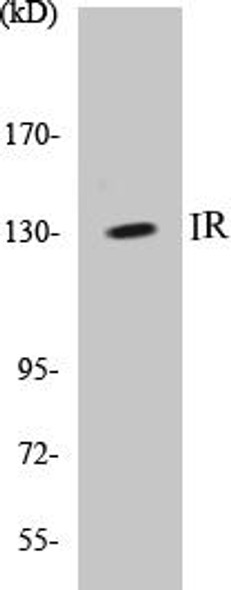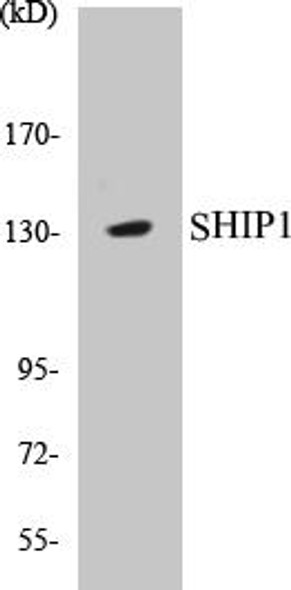Description
SENP7 Colorimetric Cell-Based ELISA Kit
The SENP7 Colorimetric Cell-Based ELISA Kit from Assay Genie is a cutting-edge research tool designed for the accurate and efficient detection of SENP7 activity within cell lines. This kit offers high sensitivity and specificity, allowing for precise measurements of SENP7 levels in a variety of experimental settings.SENP7 is a critical enzyme involved in the regulation of protein SUMOylation, a process that plays a key role in cellular homeostasis and signaling pathways. Dysregulation of SENP7 activity has been linked to various disease states, including cancer, neurodegenerative disorders, and autoimmune conditions, highlighting its potential as a therapeutic target.
By utilizing the SENP7 Colorimetric Cell-Based ELISA Kit, researchers can gain valuable insights into the role of SENP7 in cellular processes and disease mechanisms. This kit is easy to use, providing reliable and reproducible results for a wide range of applications in the fields of molecular biology, cell biology, and drug discovery. Trust Assay Genie to deliver top-quality research tools for your scientific investigations.
| Product Name: | SENP7 Colorimetric Cell-Based ELISA |
| Product Code: | CBCAB00853 |
| ELISA Type: | Cell-Based |
| Target: | SENP7 |
| Reactivity: | Human, Mouse |
| Dynamic Range: | > 5000 Cells |
| Detection Method: | Colorimetric 450 nmStorage/Stability:4°C/6 Months |
| Format: | 96-Well Microplate |
The SENP7 Colorimetric Cell-Based ELISA Kit is a convenient, lysate-free, high throughput and sensitive assay kit that can detect SENP7 protein expression profile in cells. The kit can be used for measuring the relative amounts of SENP7 in cultured cells as well as screening for the effects that various treatments, inhibitors (ie siRNA or chemicals), or activators have on SENP7.
Qualitative determination of SENP7 concentration is achieved by an indirect ELISA format. In essence, SENP7 is captured by SENP7-specific primary antibodies while the HRP-conjugated secondary antibodies bind the Fc region of the primary antibody. Through this binding, the HRP enzyme conjugated to the secondary antibody can catalyze a colorimetric reaction upon substrate addition. Due to the qualitative nature of the Cell-Based ELISA, multiple normalization methods are needed:
| 1. | A monoclonal antibody specific for human GAPDH is included to serve as an internal positive control in normalizing the target absorbance values. |
| 2. | Following the colorimetric measurement of HRP activity via substrate addition, the Crystal Violet whole-cell staining method may be used to determine cell density. After staining, the results can be analysed by normalizing the absorbance values to cell amounts, by which the plating difference can be adjusted. |
| Database Information: | Gene ID: 57337, UniProt ID: Q9BQF6, OMIM: None, Unigene: Hs.529551 |
| Gene Symbol: | SENP7 |
| Sub Type: | None |
| UniProt Protein Function: | Protease that deconjugates SUMO2 and SUMO3 from targeted proteins, but not SUMO1. Catalyzes the deconjugation of poly-SUMO2 and poly-SUMO3 chains. Has very low efficiency in processing full-length SUMO proteins to their mature forms. |
| NCBI Summary: | The reversible posttranslational modification of proteins by the addition of small ubiquitin-like SUMO proteins (see SUMO1; MIM 601912) is required for many cellular processes. SUMO-specific proteases, such as SENP7, process SUMO precursors to generate a C-terminal diglycine motif required for the conjugation reaction. They also display isopeptidase activity for deconjugation of SUMO-conjugated substrates (Lima and Reverter, 2008 [PubMed 18799455]).[supplied by OMIM, Jun 2009] |
| UniProt Code: | Q9BQF6 |
| NCBI GenInfo Identifier: | 300669717 |
| NCBI Gene ID: | 57337 |
| NCBI Accession: | Q9BQF6.4 |
| UniProt Secondary Accession: | Q9BQF6,Q7Z3F4, Q96PS5, Q9C0F6, Q9HBT5, A1L3A5, A8MW39 B7WNW8, |
| UniProt Related Accession: | Q9BQF6 |
| Molecular Weight: | 112,159 Da |
| NCBI Full Name: | Sentrin-specific protease 7 |
| NCBI Synonym Full Names: | SUMO1/sentrin specific peptidase 7 |
| NCBI Official Symbol: | SENP7 |
| NCBI Protein Information: | sentrin-specific protease 7 |
| UniProt Protein Name: | Sentrin-specific protease 7 |
| UniProt Synonym Protein Names: | SUMO-1-specific protease 2; Sentrin/SUMO-specific protease SENP7 |
| Protein Family: | Sentrin-specific protease |
| UniProt Gene Name: | SENP7 |
| UniProt Entry Name: | SENP7_HUMAN |
| Component | Quantity |
| 96-Well Cell Culture Clear-Bottom Microplate | 2 plates |
| 10X TBS | 24 mL |
| Quenching Buffer | 24 mL |
| Blocking Buffer | 50 mL |
| 15X Wash Buffer | 50 mL |
| Primary Antibody Diluent | 12 mL |
| 100x Anti-Phospho Target Antibody | 60 µL |
| 100x Anti-Target Antibody | 60 µL |
| Anti-GAPDH Antibody | 60 µL |
| HRP-Conjugated Anti-Rabbit IgG Antibody | 12 mL |
| HRP-Conjugated Anti-Mouse IgG Antibody | 12 mL |
| SDS Solution | 12 mL |
| Stop Solution | 24 mL |
| Ready-to-Use Substrate | 12 mL |
| Crystal Violet Solution | 12 mL |
| Adhesive Plate Seals | 2 seals |
The following materials and/or equipment are NOT provided in this kit but are necessary to successfully conduct the experiment:
- Microplate reader able to measure absorbance at 450 nm and/or 595 nm for Crystal Violet Cell Staining (Optional)
- Micropipettes with capability of measuring volumes ranging from 1 µL to 1 ml
- 37% formaldehyde (Sigma Cat# F-8775) or formaldehyde from other sources
- Squirt bottle, manifold dispenser, multichannel pipette reservoir or automated microplate washer
- Graph paper or computer software capable of generating or displaying logarithmic functions
- Absorbent papers or vacuum aspirator
- Test tubes or microfuge tubes capable of storing ≥1 ml
- Poly-L-Lysine (Sigma Cat# P4832 for suspension cells)
- Orbital shaker (optional)
- Deionized or sterile water
*Note: Protocols are specific to each batch/lot. For the correct instructions please follow the protocol included in your kit.
| Step | Procedure |
| 1. | Seed 200 µL of 20,000 adherent cells in culture medium in each well of a 96-well plate. The plates included in the kit are sterile and treated for cell culture. For suspension cells and loosely attached cells, coat the plates with 100 µL of 10 µg/ml Poly-L-Lysine (not included) to each well of a 96-well plate for 30 minutes at 37°C prior to adding cells. |
| 2. | Incubate the cells for overnight at 37°C, 5% CO2. |
| 3. | Treat the cells as desired. |
| 4. | Remove the cell culture medium and rinse with 200 µL of 1x TBS, twice. |
| 5. | Fix the cells by incubating with 100 µL of Fixing Solution for 20 minutes at room temperature. The 4% formaldehyde is used for adherent cells and 8% formaldehyde is used for suspension cells and loosely attached cells. |
| 6. | Remove the Fixing Solution and wash the plate 3 times with 200 µL 1x Wash Buffer for five minutes each time with gentle shaking on the orbital shaker. The plate can be stored at 4°C for a week. |
| 7. | Add 100 µL of Quenching Buffer and incubate for 20 minutes at room temperature. |
| 8. | Wash the plate 3 times with 1x Wash Buffer for 5 minutes each time. |
| 9. | Add 200 µL of Blocking Buffer and incubate for 1 hour at room temperature. |
| 10. | Wash 3 times with 200 µL of 1x Wash Buffer for 5 minutes each time. |
| 11. | Add 50 µL of 1x primary antibodies (Anti-SENP7 Antibody and/or Anti-GAPDH Antibody) to the corresponding wells, cover with Parafilm and incubate for 16 hours (overnight) at 4°C. If the target expression is known to be high, incubate for 2 hours at room temperature. |
| 12. | Wash 3 times with 200 µL of 1x Wash Buffer for 5 minutes each time. |
| 13. | Add 50 µL of 1x secondary antibodies (HRP-Conjugated AntiRabbit IgG Antibody or HRP-Conjugated Anti-Mouse IgG Antibody) to corresponding wells and incubate for 1.5 hours at room temperature. |
| 14. | Wash 3 times with 200 µL of 1x Wash Buffer for 5 minutes each time. |
| 15. | Add 50 µL of Ready-to-Use Substrate to each well and incubate for 30 minutes at room temperature in the dark. |
| 16. | Add 50 µL of Stop Solution to each well and read OD at 450 nm immediately using the microplate reader. |
(Additional Crystal Violet staining may be performed if desired – details of this may be found in the kit technical manual.)






